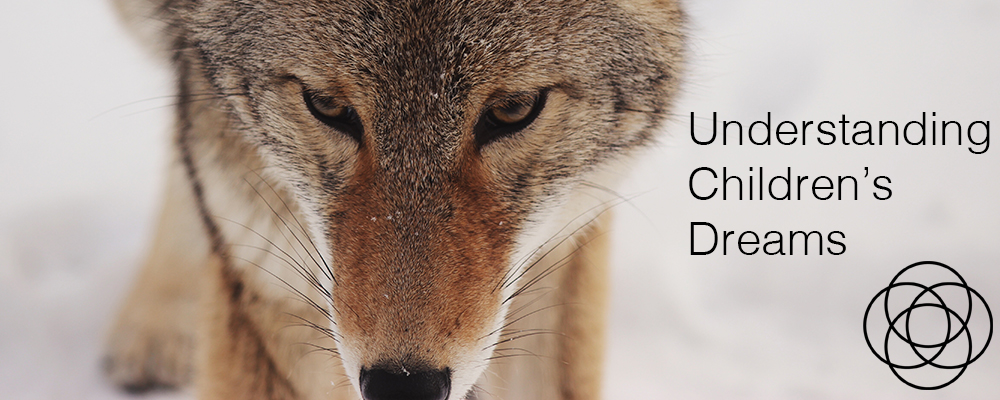“I have a three year old patient who is having vivid nightmares of things he has never seen or experienced, like children trapped in a large hole, or something very violent like killing. He has never seen anything violent or scary, or had experiences of these.”
I received this enquiry last week. The practitioner asked how such young children can dream so vividly of things they have never experienced. We might ask the same question of our adult dreams, but let’s stay with young pre-schoolers because their limited worldly experience makes it more intriguing and because it’s something anxious parents frequently ask me.
It’s a question that puzzled and frightened me during my early childhood when I dreamed of looming tsunamis, threatening packs of wolves, and snakes at the bottom of my bed.
In my early teenage years, reflecting on these dreams, I thought I must have heard stories and fairytales about snakes and wolves that influenced my dreams, but tsunamis – back when I was a small child and sheltered from the news and media – were a phenomenon I was sure I hadn’t heard about, far less experienced.
By my mid-teens, still suffering recurring tsunami dreams, I thought about how scared I had always been of the waves when we paddled in the cold English summer seas, and wondered which came first, the tsunami dreams or the waking life reality. Were my dreams, I wondered, drawing on my longstanding fear of waves.
As I grew older still, I began to think that my recurring dream of the path where I encountered the threatening pack of wolves was a past life memory. That I seemed to be a boy in this dream strengthened that feeling. I began to look at the snakes and tsunamis in a different light.
As I grew older and wiser, I noticed how strongly these dreams worked as metaphors for my waking life experiences at the time: scared and overwhelmed by towering waves of emotion seemingly appearing out of nowhere (my tsunamis), threatened and blocked from moving forward along my path (my wolves), and feeling cramped and trapped when I needed to feel relaxed and safe (my snakes). I say my tsunamis, my wolves, my snakes, because our dreams are personal and unique.
You probably noticed that all three of these recurring childhood dreams were metaphors for struggling to find my personal space and boundaries. As an adult looking back, I have named some of the emotions I was feeling: scared, overwhelmed, threatened, blocked, cramped, and trapped, but if I’d been asked to describe these dreams when I was a child, my words and body language would have been more revealing.
If you are a parent anxious about your child’s dreams, an adult looking back on your childhood dreams, an adult reflecting on your current dreams, or a practitioner working with children who happen to mention their dreams, go straight to this bottom line:
What are the emotions the dreamer is feeling in this dream? How do these emotions relate to the day or two before the dream? Match the dream metaphor to the waking life experience to help deepen your insight.
Returning to the original question, how is it that young children can dream of things they have never seen or experienced?
Their symbols may come from stories, songs, books, videos, commercials, television and radio news, listening to and watching older children play and adults interact. Their symbols may come from everyday life (like big waves at the beach), or from archetypal resonances (things coming to an ending maybe feeling like death, things beginning maybe feeling like birth). Their dream symbols may even come from past life memories, or parallel lives, or deeper connections across the planet, or any of the great mysteries of life, but let’s stay with what’s here and now, with how we can help our children, or help ourselves, to live and love well today.
Look beyond the dream symbols. Look at the emotions the dreamer feels. Young children’s – everyone’s – dreams are indeed based on their experiences. Those experiences are the emotions they are encountering right now in everyday life, and often struggling to handle. Begin there.

